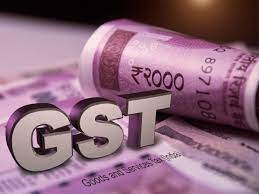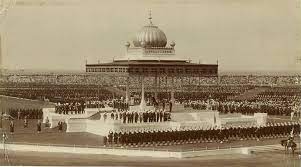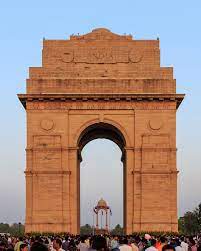The term “Delhi Durbar” refers to the grand ceremonial gatherings held in Delhi, India during the British colonial period. These events were organized to mark significant occasions such as the proclamation of a new Emperor or Empress of India or the celebration of a royal visit by the British monarch.
The Delhi Durbar of the British Raj was a lavish display of pomp and pageantry, intended to showcase the power and authority of the British Empire in India. The Durbar was often held at the Coronation Park in Delhi, where a temporary structure called the “Imperial Durbar” was constructed for the occasion.
During a Delhi Durbar, the British monarch, represented by the Viceroy or Governor-General, would address the assembled dignitaries, local rulers, and notable individuals. The event would feature parades, military displays, cultural performances, and the exchange of gifts and honors.
The most famous Delhi Durbar took place in 1911 when King George V was proclaimed Emperor of India, marking the shift of the imperial capital from Calcutta to Delhi. This event was particularly significant as it symbolized the British Empire’s desire to consolidate and assert its authority over India.
The Delhi Durbar also provided an opportunity for the British to reinforce their control over the princely states, as the rulers of these states would attend the Durbar and pay homage to the British monarch.
The tradition of Delhi Durbars continued until the early 20th century, with the last major Durbar held in 1919. After India gained independence in 1947, the Durbar tradition was discontinued.
Today, remnants of the Delhi Durbars can still be seen in various structures and monuments in Delhi, such as the Coronation Park and the India Gate, which were built to commemorate these grand events from India’s colonial past.








